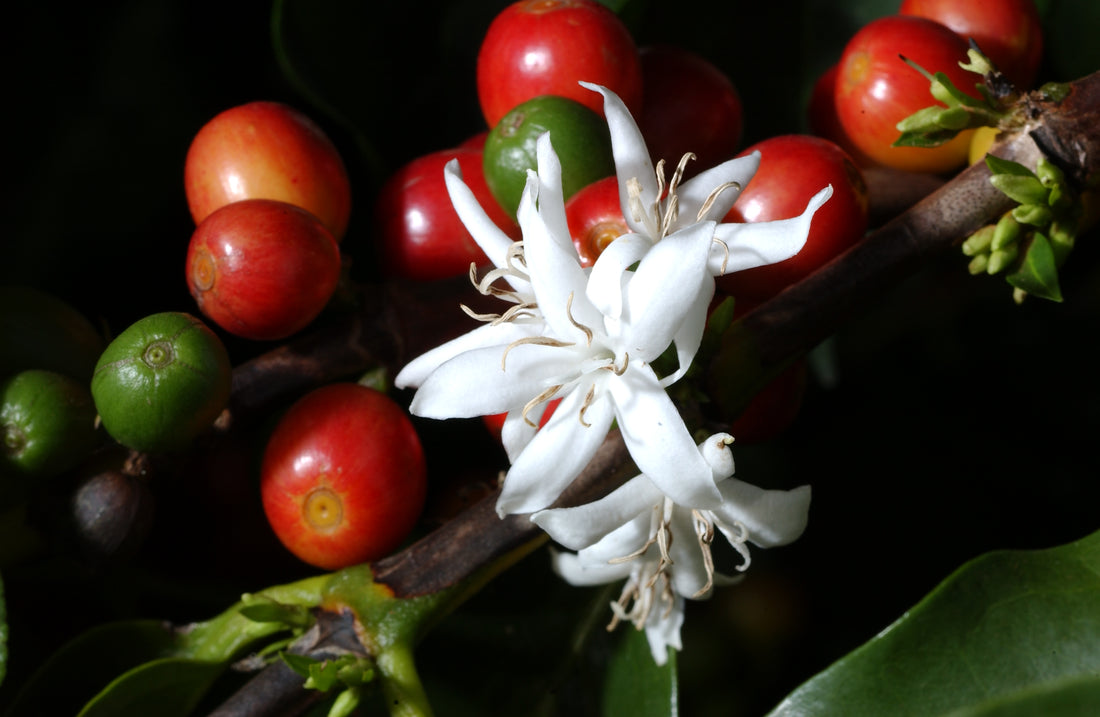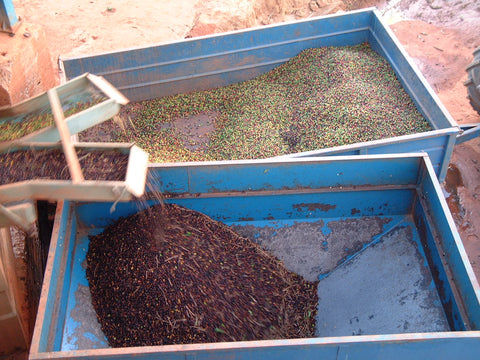How does illy produce coffee? The answer to the question is a bit long. Because illy carefully follows every moment of the coffee's journey, from the production of the bean to the espresso in the cup. We have explained the details of the steps of this adventure, which we call from seed to cup , below. After reading Why illy coffee? You will also be able to find the answer to the question.

ARABICA COFFEE BEANS
The coffee plant is a tree classified in the Coffea genus of the Rubiaceae family. Coffea plant, which likes humid environments, grows in tropical regions where there is abundant rainfall and there are no sudden temperature changes. The best variety of Coffea, which has many varieties, is Arabica coffee beans, which are used in 59% of the world's coffee production today. Arabica coffee beans, produced from the first coffee plants discovered in Ethiopia, generally grow on mountainous plateaus or volcanic slopes at an altitude of around 2,000 meters. During periods of increased rainfall, Arabica flowers bloom and gain a fascinating appearance with their white appearance. Within 8-9 months, the flowers turn into fruit and turn red, and it is also called coffee cherry because of its cherry-like appearance. The red coffee fruit contains two thin beans, with flat sides facing each other and rounded outer sides. Each Arabica coffee contains 2 separate beans.
GROWING
Coffee is grown using three different methods that are widespread around the world. These methods are generally shaped according to different local traditions, climate and geographical conditions. Protection from sunlight, the oldest known and most traditional method of coffee cultivation, is still practiced in parts of America and India. In Brazil, also known as the main producer, coffee plants grown under the sun in large-scale fields grow with special irrigation and harvesting techniques and wider environmental impacts.
HARVEST
Since coffee flowers bloom under rain, flowers and fruits are found together, making coffee harvest difficult. There are 3 different harvesting methods known worldwide. The first method is to shake the branches so that all ripe fruits fall off on their own and leave the sorting process until the end. The second method is to collect the fruits, regardless of whether they are ripe or raw, and then sort them. Although these two processes enable the collection of more fruit in volume, they are not considered an efficient method for collecting quality coffee beans. The manual picking process used by illy is a system that increases the blend quality and is more expensive than other methods.

SORTING
Coffee beans are extracted from the coffee fruit by two different methods: washing or drying. Coffee beans obtained through the drying process are known as "natural coffee" in the industry. “Natural coffee” is obtained by drying the fruits under the sun using natural methods for up to 20 days . After the coffee beans are completely dried, they are separated from the fleshy part of the fruit. The washed coffee beans are placed in water tanks. With this method, coffee beans are easily separated from the fruit shells and left to dry. Green coffee beans sorted by both methods are then separated according to their shape and size.
TRANSPORT
The journey of green coffee beans to illy roasting units in Trieste begins in 60-kilogram woven sacks from the source countries. Thanks to these woven sacks, the risk of mold formation in the beans, which are exposed to air throughout their journey, is minimized. illy's experience and knowledge in transporting coffee beans and the methods it uses are unique to illy. Thanks to these methods, green coffee beans are transferred from their homeland to illy's unit in Trieste, preserving their integrity.

VOTE
Woven sacks arriving in Trieste are first numbered and then processed for control. The selection process begins by placing coffee beans on a vibrating belt. The nuclei moving along this band are separated from foreign substances. Afterwards, small particles are cleaned with a vacuum machine and magnetic parts, if any, are removed with the help of a magnet. Finally, with advanced imaging techniques, all fermented, unsorted or unsuitable grains are separated. But why does illy need such a detailed review? Because only one unsuitable grain among 50 coffee beans is enough to spoil the taste of a cup of coffee. In illy units, nearly 45 tons of coffee beans are separated with this meticulous method during a day.

BLEND
Before the roasting process, illy carefully blends 9 different types of Arabica coffee beans to ensure that each has its own characteristics in the same proportion in the cup. This process is essential for illy to obtain the same aroma in every blend. The blending process is entirely an art. Coffees from different origins carry different aromas and master hands blend these coffees harmoniously. Coffee harvest varies from year to year. While there may be two separate beans with different properties even within the same coffee fruit, it is of course not possible to use a fixed formula during blending. In order to obtain a quality blend, the most important factor is to know the different properties of 9 different coffee beans and understand how they affect them. In other words, illy's ability to obtain the same aroma in every sip is due to his very good knowledge of the properties of coffee and coffee blending methods.

ROASTING
Roasting is one of the most important processes in the story of coffee. Nearly 800 substances are released under temperatures reaching 200°C for 15 minutes, and each of them contributes uniquely to the taste and aroma of the illy blend. Coffee beans that reach very high temperatures during the roasting process first turn golden yellow and a toasty aroma emerges. As the roasting process continues, the volume of the beans increases by up to 60% and their color becomes light brown. In the final stage, the beans turn into the familiar coffee tone and lose approximately 18% of their weight, giving them a brittle, brittle structure.
It is very important that the roasting process is completed at the right time. Coffee beans that are roasted for longer than necessary lose their properties and aroma. The ideal acidity and bitterness balances are disrupted.
Immediately after the roasting process is completed, air cooling is applied to prevent the beans from cooking due to heat. This ensures that the aroma is not spoiled and the blend is preserved at the best level.

PACKAGING
Roasted coffee loses 40% of its aroma after 8 hours of contact with air. It is vital that the coffee is packaged using the vacuum method to prevent it from coming into contact with air.
Apart from this packaging method , illy ensures that the coffee reaches the cup without losing its properties with its pressurization technology.
Roasted coffees are pressurized by placing them in recyclable boxes with nitrogen. This process ensures that the coffee aroma is preserved for more than 1 year. The sound you make when you open the lid of the box and the wonderful smell of coffee spread are proof of its unique freshness. CHECK out illy 250g bean and powder coffee varieties!

PERFECT ESPRESSO
Making perfect espresso starts with choosing the best quality Arabica coffee beans. During service, it spreads its pleasant and attractive scent from the cup, leaving a caramel-like and softly bitter taste on the palate of coffee lovers at the first sip.
The trick is that the red-brown cream on the espresso creates a structure that resembles the stripes of a tiger.






